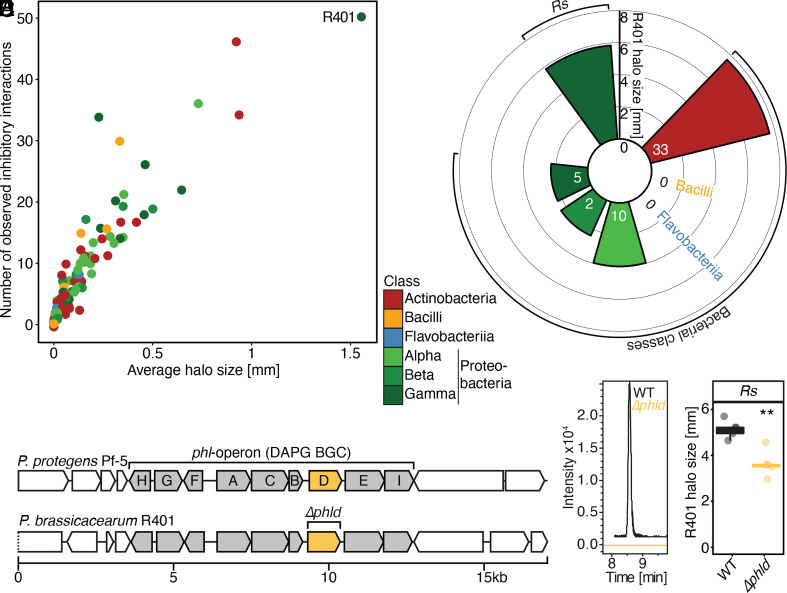Fig. 3.
DAPG contributes to the inhibitory activity of P. brassicacearum R401. (A) Projection of the number of observed inhibitory activities (out of 198) as a function of the mean halo size for each producer strain as measured in mBA experiments. The most antagonistic strain (P. brassicacearum R401) is highlighted. (B) Mean halo size of R401 against target bacterial classes or R. solanacearum (Rs) are indicated by bar height. Numbers indicate the number of observed inhibitory interactions of R401 per target bacterial class as measured in mBA. (C) Schematic overview of the phl operon that encodes all 2,4-Diacetylphloroglucinol (DAPG) biosynthetic genes in P. protegens Pf-5 and R401. Genes within the BGC are colored in gray, the gene encoding the initial anabolic enzyme PhlD is highlighted in yellow. (D) Extracted ion chromatograms for R401 DAPG (EICs: 211.0601 m/z ± 0.01 [M+H]+) of the WT and mutant extracts, confirming complete lack of DAPG production in the tested mutant. (E) Halo production of R401 WT and Δphld using Rs as target bacterium as measured in mBA. Statistical significance was determined by Kruskal—Wallis followed by Dunn’s post-hoc test and Benjamini—Hochberg adjustment. Significance compared to WT is indicated by black asterisks (∗∗, P < 0.01; n = 5).

